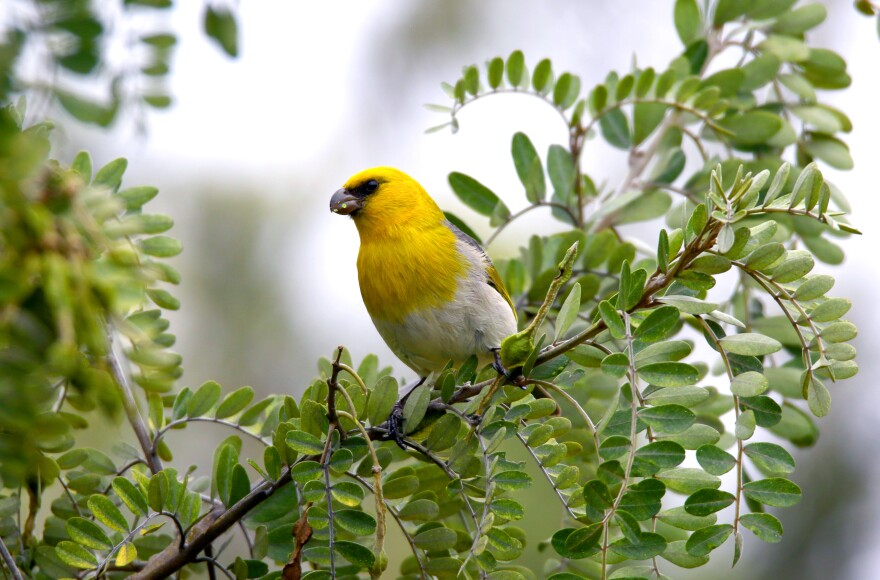The palila is the last finch-billed native honeycreeper. These rare birds have all but vanished from the Hawaiian Islands, with the exception of a few small patches of high elevation forest on the west side of Maunakea on Hawaiʻi Island.
Palila spend their days munching on the seeds and flowers of māmane trees. The palila's relationship to māmane is a singular one. Its bill is specifically adapted to crack open the hard shells of māmane seeds.
Most birds would find this meal to be more trouble than its worth, as these green seeds contain toxic amounts of quinolizidine alkaloids and phenolics, and high levels of non-digestible fiber. But that's no deterrent for the palila!
The palila was first listed as an endangered species over five decades ago. While conservation efforts may have saved this bird from disappearing altogether, the total population of palila is still less than 1,500 individuals.






